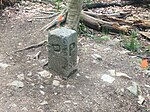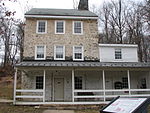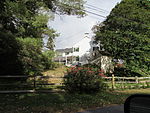Mechanicsville, Delaware
Border irregularities of the United StatesBorder tripointsBorders of DelawareBorders of PennsylvaniaDelaware geography stubs ... and 5 more
Internal territorial disputes of the United StatesPre-statehood history of PennsylvaniaUnincorporated communities in DelawareUnincorporated communities in New Castle County, DelawareUse mdy dates from July 2023

Mechanicsville is an unincorporated community in New Castle County, Delaware, United States.The community is located in "The Wedge", a geometric oddity arising out of ambiguity in the 18th-century border dispute settlement between the Penns and Calverts in the British North American colonies. Until 1921, Mechanicsville was claimed by both Pennsylvania and Delaware. A resolution allocated Mechanicsville and The Wedge to Delaware, which owns it today.
Excerpt from the Wikipedia article Mechanicsville, Delaware (License: CC BY-SA 3.0, Authors, Images).Mechanicsville, Delaware
New London Road,
Geographical coordinates (GPS) Address Nearby Places Show on map
Geographical coordinates (GPS)
| Latitude | Longitude |
|---|---|
| N 39.716944444444 ° | E -75.783611111111 ° |
Address
New London Road 933
19711
Delaware, United States
Open on Google Maps








